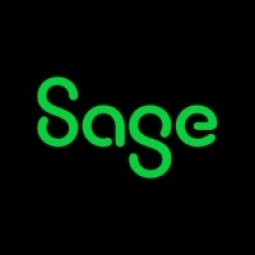公司规模
Large Corporate
地区
- America
- Europe
国家
- United States
- Germany
产品
- Sage ERP X3
- Sage Enterprise Intelligence
技术栈
- ERP
- Business Intelligence
实施规模
- Enterprise-wide Deployment
影响指标
- Cost Savings
- Productivity Improvements
- Customer Satisfaction
技术
- 功能应用 - 企业资源规划系统 (ERP)
适用功能
- 离散制造
- 物流运输
用例
- 供应链可见性(SCV)
- 库存管理
服务
- 系统集成
关于客户
Satellite Industries, Inc. 是世界上最大的便携式卫生设备供应商。该公司总部位于明尼苏达州明尼阿波利斯,在北美和欧洲设有办事处。Satellite Industries 是运营效率的典范。为了支持其遍布全球的分布式运营,该公司选择了 Sage ERP X3 和 Sage Enterprise Intelligence。该公司通过使用 Sage ERP X3 建立自助服务门户,成功地将其业务合作伙伴纳入其处理环境。该公司目前正在开设一个全球配送中心,该中心使用 Sage ERP X3 仓库管理功能完全自动化。
挑战
Satellite Industries, Inc. 是世界上最大的便携式卫生设备供应商,该公司正面临着巨大的增长和全球扩张,这给其业务管理应用程序系统带来了巨大的压力。财务报告是一个耗时费力的过程,月末结算通常需要 15 天以上。该公司需要一个功能强大的集成企业资源规划 (ERP) 解决方案,以便更好地满足其不断增长的业务需求。该公司还希望快速访问实时信息,而不是几周前的信息。该公司的 Sage 业务合作伙伴向 Babcock 介绍了 Sage Enterprise Intelligence,这是一款与 Sage ERP X3 集成的强大商业智能工具。
解决方案
Satellite Industries 实施了 Sage ERP X3,取代了自己开发的软件系统和几个不连贯的流程。Sage ERP X3 从近 40 个竞争软件系统中脱颖而出,其中包括 Microsoft Dynamics AX、daily.commerce 和 Oracle。该公司使用 Sage ERP X3 在整个仓库实施了条形码跟踪、定向拣选和定向存放。该公司还通过使用 Sage ERP X3 建立自助服务门户,成功地将其业务合作伙伴纳入其处理环境。该公司的 Sage 业务合作伙伴向 Babcock 介绍了 Sage Enterprise Intelligence,这是一款与 Sage ERP X3 集成的强大商业智能工具。
运营影响
数量效益

Case Study missing?
Start adding your own!
Register with your work email and create a new case study profile for your business.
相关案例.

Case Study
Remote Temperature Monitoring of Perishable Goods Saves Money
RMONI was facing temperature monitoring challenges in a cold chain business. A cold chain must be established and maintained to ensure goods have been properly refrigerated during every step of the process, making temperature monitoring a critical business function. Manual registration practice can be very costly, labor intensive and prone to mistakes.

Case Study
Hospital Inventory Management
The hospital supply chain team is responsible for ensuring that the right medical supplies are readily available to clinicians when and where needed, and to do so in the most efficient manner possible. However, many of the systems and processes in use at the cancer center for supply chain management were not best suited to support these goals. Barcoding technology, a commonly used method for inventory management of medical supplies, is labor intensive, time consuming, does not provide real-time visibility into inventory levels and can be prone to error. Consequently, the lack of accurate and real-time visibility into inventory levels across multiple supply rooms in multiple hospital facilities creates additional inefficiency in the system causing over-ordering, hoarding, and wasted supplies. Other sources of waste and cost were also identified as candidates for improvement. Existing systems and processes did not provide adequate security for high-cost inventory within the hospital, which was another driver of cost. A lack of visibility into expiration dates for supplies resulted in supplies being wasted due to past expiry dates. Storage of supplies was also a key consideration given the location of the cancer center’s facilities in a dense urban setting, where space is always at a premium. In order to address the challenges outlined above, the hospital sought a solution that would provide real-time inventory information with high levels of accuracy, reduce the level of manual effort required and enable data driven decision making to ensure that the right supplies were readily available to clinicians in the right location at the right time.







